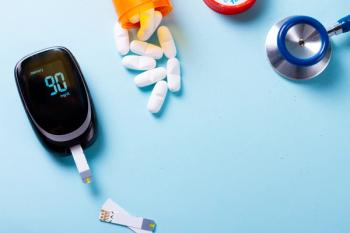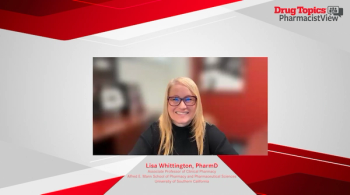
Individualizing Care for Patients With Diabetes
Drs Jerry Meece and Jennifer Goldman offer treatment plans based on individualized patient care models for patients with diabetes.
Episodes in this series

Jerry Meece, RPh, CDCES, FACA, FADCES: We all work off targets and guidelines. We’ve done this forever. Two of the most commonly referred to guidelines for diabetes goals and targets are from the American Diabetes Association [ADA] and AACE [American Association of Clinical Endocrinology]. There are 5 more out there, but these are 2 of the most common. Can you compare the ADA and AACE guidelines for tight control? Which of these do you go by in your practice? How do you decide?
Jennifer D. Goldman, PharmD, RPh, CDCES, BC-ADM, FCCP: The ADA recommends an A1C [glycated hemoglobin] goal of less than 7% for most people, and AACE recommends less than 6.5% for most people. I can’t give you an answer for what I choose in my practice. It’s patient specific. I look at each patient as an individual and then choose the goal we’re going to use.
Jerry Meece, RPh, CDCES, FACA, FADCES: I’ve always said that the answer to every diabetes question is: “It depends on the patient.” I don’t care what you ask me, that’s the answer. Individualization is so important. It’s what the new ADA guidelines emphasize. If Joe Bob Jones comes into your practice and says, “I’ve got this on my laboratory test: it says A1C. I don’t know what an A1C is. Can you explain what an A1C is to a layperson?” Our pharmacy should explain this in 30 seconds. What’s the answer?
Jennifer D. Goldman, PharmD, RPh, CDCES, BC-ADM, FCCP: An A1C is an average blood sugar over a 3-month period. This blood test will measure your blood sugar 24-7 for about 3 months, and we’ll give you an estimated average blood sugar so that we can look at your general overall blood glucose control for the past 3 months.
Jerry Meece, RPh, CDCES, FACA, FADCES: It’s a reminder and a caveat. We use jargon. You and I and all diabetes educators throw around [words like] lipids, hyperglycemia, hyperlipidemia, and lipohypertrophy, and we forget that that’s our everyday vocabulary. But our patients aren’t going to say, “I’m sorry, but I’m not smart enough to figure out what you just told me.” We need to caution ourselves to refrain from the jargon and at the end of our conversations to say, “Can you repeat that back to me? Is that clear? Do you have questions about that?” Just a cautionary tale to watch how familiar we are with all this. But to that point, which patients do you feel more comfortable with suggesting a more aggressive A1C, such as 6.5% vs 7%, 7.5%, or even 8%? Where does that come in as far as decision-making and recommendations?
Jennifer D. Goldman, PharmD, RPh, CDCES, BC-ADM, FCCP: That’s a perfect example of looking at the patient as an individual. This is supported by the ADA and AACE. Individualizing your goals for a patient. If you have a patient with a long life expectancy who’s young, healthy, and not at fall risk, we may target an A1C of less than 6.5% or lower—less than 6%—as long as we can do that without inducing hypoglycemia. But if I have an older patient who’s at a fall risk or is frail, I might choose an A1C goal of less than 8%, because it’s very important not to induce hypoglycemia. But we also have very healthy older patients. You might have someone who’s over 65 [years old]. That doesn’t necessarily mean you need to be targeting less than 8%. You could be targeting less than 7% or less than 6.5%. It’s going to depend on that specific patient. Overall, it’s very important to not induce hypoglycemia.
Jerry Meece, RPh, CDCES, FACA, FADCES: Back to the old phrase: it depends on the patient.
Jennifer D. Goldman, PharmD, RPh, CDCES, BC-ADM, FCCP: Exactly.
Jerry Meece, RPh, CDCES, FACA, FADCES: To that point, you bring up something that every pharmacist should have as their goal. The ADA has great guidelines. They have the 2022 diabetes care guidelines. They have living guidelines that are updated on a regular basis. If you go to section 6 of the 2022 ADA diabetes care guidelines, you’ll find a great graph that shows low risk and high risk. With high-risk hypoglycemia in older patients, maybe we’re going to raise that A1C to low risk. We’re going to be more aggressive. That’s a great chart to look at and remind us of what we have. Go to the ADA. You can go to the ADA website to find the 2022 ADA guidelines, or you can google “ADA 2022 diabetes care guidelines.” It’s free, and it’s broken down well. I encourage all pharmacists to make sure that’s available to you. It’s a quick reference.
Jennifer D. Goldman, PharmD, RPh, CDCES, BC-ADM, FCCP: Yes. And they can download it in a free app that’s updated.
Jerry Meece, RPh, CDCES, FACA, FADCES: Yes.
Jennifer D. Goldman, PharmD, RPh, CDCES, BC-ADM, FCCP: They can get it right on their phone, and they’ll have access to the entire document, including the drug therapy sections.
Jerry Meece, RPh, CDCES, FACA, FADCES: Yes. And if you want to even do a shortcut, they still have the abridged, condensed version of the ADA guidelines there. There are a lot of ways to access this information. Thank you.
Transcript edited for clarity.
Newsletter
Pharmacy practice is always changing. Stay ahead of the curve with the Drug Topics newsletter and get the latest drug information, industry trends, and patient care tips.





















































































































































